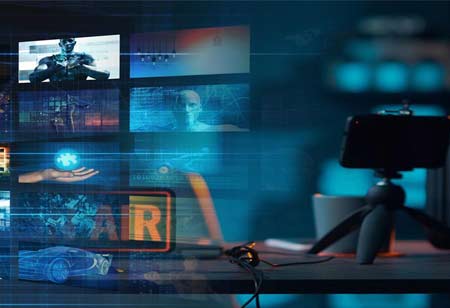THANK YOU FOR SUBSCRIBING
Be first to read the latest tech news, Industry Leader's Insights, and CIO interviews of medium and large enterprises exclusively from Hrtech Outlook
THANK YOU FOR SUBSCRIBING

By
HR Tech Outlook | Friday, December 01, 2023
Stay ahead of the industry with exclusive feature stories on the top companies, expert insights and the latest news delivered straight to your inbox. Subscribe today.
A flexible and strategic workforce planning model aligns with long-term business objectives and enhances customer experience.
FREMONT, CA: Workforce planning is essential for businesses of all sizes and industries. It entails strategically matching an organization's staff with its business goals and objectives. Analyzing present capabilities, anticipating future workforce needs, and adopting measures to close the gap are all part of the process. A well-executed workforce planning model guarantees that a business has the necessary number of agents on hand to satisfy client demand efficiently, neither overstaffed nor understaffed. This fine-tuned agent staffing strategy ensures customer pleasure and helps control labor costs. Labor planning has traditionally been a complex activity done by a small group of properly trained analysts who thoroughly understand the labor planning model.
The landscape has changed, and contemporary workforce management tools have sped up the process, making it more accessible to all contact center employees. Automation has democratized labor planning by eliminating the need for constant human judgment and involvement. Workforce planning ensures that a company's people resources are aligned with its strategic goals. Organizations can use resources more effectively to meet long-term goals by proactively recognizing talent shortfalls and surpluses. This alignment prevents the firm from overinvesting in areas with excess talent, allowing it to focus on building skills and competencies critical for future success. Workforce planning assists firms in reducing labor expenditures. Organizations can avoid over-hiring and excessive overtime costs by effectively predicting workforce demands. This not only saves money but also increases budget predictability and financial stability.
While technology has made workforce planning more effective, it remains a complicated endeavor due to the human factor involved. People, agents, and customers add an element of surprise to the process. The current labor market instability can derail even the most meticulously planned staffing strategies. Furthermore, client preferences for various support channels might shift quickly, altering the types of agents that businesses must hire.
Given that staffing models directly impact customer experience and overall business strategy, having a solid model cannot be understated. The basic goal of workforce planning is to guarantee that a company has the appropriate individuals in the appropriate jobs at the appropriate times. This means having enough agents with the relevant expertise to manage anticipated volumes and contact kinds in contact centers.
Long-term business strategy must drive personnel planning on a larger scale. This plan specifies the types of abilities employees will require to assist the corporation in meeting its business objectives. Companies can identify gaps that need to be filled by comparing these criteria to the current skill sets of their workers.
A workforce planning model is a tool that aids in the workforce planning process. Contact centers are intimately familiar with these models and rely on them to make intelligent hiring, scheduling, and training decisions. The technological solutions of these models range from simple Excel spreadsheets to complex AI-powered workforce management tools.
Organizations that continually work to improve their models will gain several rewards. It connects the employees to the organization's aims. Achieving company goals is strongly reliant on having the proper people in place. Companies boost their chances of achieving their strategic goals using a top-down approach in which the business strategy guides the employment model.
Contact centers always balance labor costs and service levels, seeking the proper balance between understaffing and overstaffing. A solid workforce planning model can make this balancing act easier by ensuring the contact center has the appropriate number of agents with the necessary capabilities. As a result, crucial customer experience-related key performance indicators (KPIs) such as wait times, abandon rates, and first-contact resolutions are optimized.



